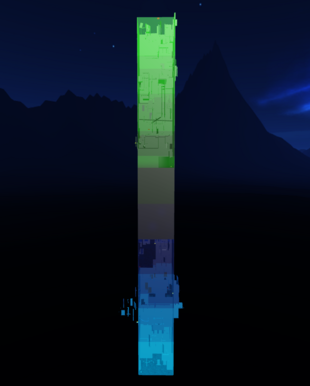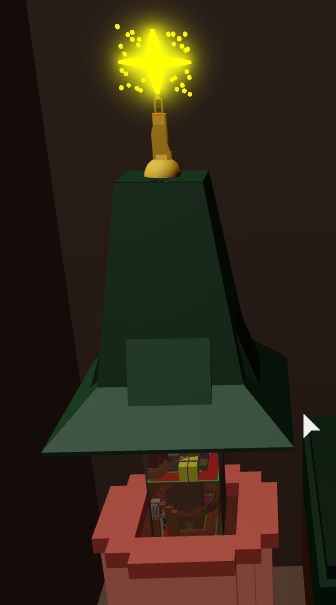

Tower of Confusion was released to Ring 1.This also marked the first time there were Community Towers in the game.

It also categorized Towers into Beginner, Intermediate, Advanced, and Psychologically Unsafe. It introduced a new difficulty, called ? (which later became Remorseless), a difficulty chart, a mysterious Cyan colored difficulty (was originally reserved for ToC), and added Tower of Keyboard Yeeting, Tower of Stress, Tower of Rage, and Tower of True Skill. The first "mega-update" of KToH came out, introducing a brand new lobby, which looks exactly like the current Ring 1 lobby.A "Fan-Made Towers" section was added, but never used. The players finally got to play easier towers and beat them. Tower of Anger and Tower of Madness were both added at the same time, as Tower of Hell was the easiest tower prior to this update.So little people beat Tower of Confusion that Kiddie decided to make EO rank for the people who did. This was also why the "elite obbyist" role was created. There was also a secret portal hidden inside of the spawn island, where Tower of Confusion was meant to be. The first version of the Tower Kit was made, so people could build their own towers for the game.The game name was also changed from Kiddie's Tower of Hell to Kiddie's Towers of Hell. The lobby was updated to have grass and decoration. It was the first Tower to require glitching. Originally meant to be Hard, it was turned into a ? and then Good Luck Buddy (later Intense / Remorseless) simply because of it being built harder than Kiddie wanted. Tower of Impossible Expectations was added.There was also a new lobby, but it was just a baseplate with Tower portals. Tower of Screen Punching was added to the game, but at Very Hard ( Difficult) difficulty, instead of Challenging like it is now.KToH started getting popular which inspired Kiddie to make a new Tower called the Tower of Screen Punching.Players, at the time, found Tower of Hecc so hard that they did not plan to beat it, but rather see how far they could get. KToH was released to the public with Tower of Hecc being the only Tower (formerly known as Tower of Hell).

#Jupiter hell wiki for free
In 2014 DRL was described by PCGamer as "a brilliant mashup of two classics" and named among the "Ten top fan remade classics you can play for free right now". For instance, a community source port of DRL to the OpenPandora handheld resulted already three days later. Kisielewicz anticipates that the open-source community will be able to provide support and improvements to enhance both DRL and Jupiter Hell.
#Jupiter hell wiki code
The source code was made available via GitHub under GPL 2.0 or later and the game's assets under the CC BY-SA 4.0 license. The notice only made him push up this change to an earlier date. Kisielewicz had planned on releasing DoomRL as open-source prior to receiving the notice at the conclusion of an ongoing crowdfunding campaign on Kickstarter for Jupiter Hell, a sequel to DoomRL using the same assets, as a thank-you to his supporters. In addition, the game was made open source by Kisielewicz on December 6, 2016.

To exclude "Doom" from the game's name, the title was changed to simply DRL on December 7, 2016. On December 2, 2016, Kisielewicz received a cease and desist notice from ZeniMax Media, concerning the use of the wordmark "Doom" present on game's website and name, which ZeniMax trademarked worldwide. Since approximately 2002 in-development with first beta versions, the latest stable release is from 2013. The developers based DRL in the popular first-person shooters Doom and Doom II universe. The game was created by programmer Kornel Kisielewicz with Free Pascal, and uses art by Derek Yu. DRL includes the entire Doom soundset and music library, with optional support for high-quality MP3s. A limited player inventory, non-stackable items, and other design choices contrast with the often extreme intricacy of games in its genre.Īs of version 0.9.9.6, Derek Yu's graphical tileset is now the game's default, offering an alternative to the more traditional ASCII rendering. As it is based upon Doom, the game is more fast-paced and combat-oriented than usual for a roguelike, and relies heavily on ranged rather than melee combat. DRL is turn-based, offers a top-down interface formed entirely of ASCII characters, and features a character leveling system with traits.


 0 kommentar(er)
0 kommentar(er)
